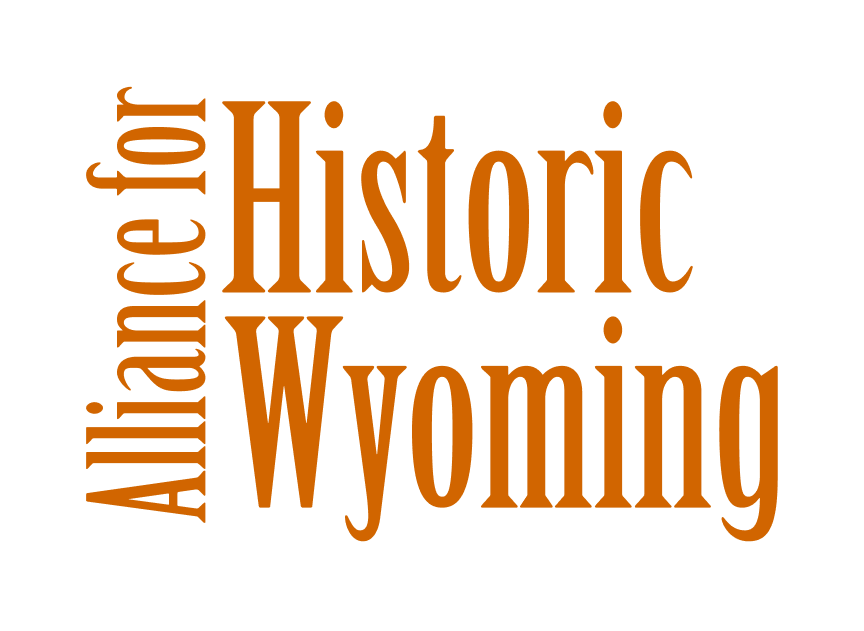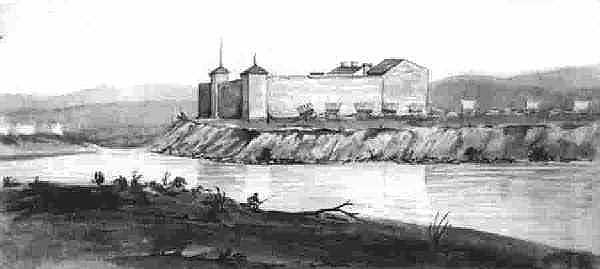By Rine Kasckow, Preservation Programs Assistant
May 23, 2018
 Ft. Laramie, 1849, sketch by James Wilkins. http://www.wyomingtalesandtrails.com/photosftlar.html
Ft. Laramie, 1849, sketch by James Wilkins. http://www.wyomingtalesandtrails.com/photosftlar.html
If you are from Wyoming, it’s probable you have heard of the history of Fort Laramie, such as it started in 1834 as fur trading post named Fort William at the convergence of the Laramie and North Platte Rivers. From there it was passed on to Frontenelle, Fitzpatrick & Co fur trading company in 1835 and then was passed on to the American Fur Company. By the time the American Fur Company bought the fort, the structures had begun to deteriorate leaving no protection for product and the fort’s occupants. This led to the business to replace the buildings that were no longer useful. Here’s when the history of its architecture becomes interesting.
The American Fur Company wanted to build their new fort with something sturdier than wood. The company decided that they would build their new fort out of adobe, a stronger material that would have a better chance against the elements. Adobe is a simple building material made of sun-dried mud and it’s use dates back 4,000 years ago. It has been used in parts of Africa, Middle East, Latin America, and especially the North American Southwest.
The area where the builders settled down has become known as “Mexican hill.” Photo from nps.gov.
To construct this new adobe fort, In 1841 the American Fur Company contracted Hispanic workers from New Mexico to travel to Wyoming to build the fort. The same year the project was completed and Fort John was open for trade for the incoming Oregon/California Trail Emigrants. Yet with the Fort being completed this did not mean that the Hispanic artisans that were contracted for the job left the state, rather they settled down near Guernsey and began to farm. According to the Wyoming State Historic Preservation Office website, “the men settled permanently in this region, constructing an irrigation system to water the gardens where they grew a variety of produce to trade with the emigrants and soldiers who passed through this region.” The fresh vegetables were a welcome change to the diet of the Oregon trail travelers.
You can see remnants of the existence of this New Mexican community today in Guernsey. Right next to the Oregon Trail, you’ll see the area where the workers created a home, where they worked the land and became a part of the cultural landscape. This piece of land and history is a reminder of their participation in creating what we know of today as Fort Laramie.
To Learn more about the builders who helped build Fort John click below:
https://www.nps.gov/nr/travel/cultural_diversity/Fort_Laramie_National_Historic_Site.html
https://www.wyohistory.org/encyclopedia/mexican-hill-steep-descent-oregon-trail
https://www.wyohistory.org/encyclopedia/fort-laramie
http://wyoshpo.state.wy.us/trailsdemo/mexicanhill.htm
https://npgallery.nps.gov/GetAsset/88775a56-f15c-4458-9754-20bd0f973c17
Hoagland, Allison K. Army Architecture in the West: Forts Laramie, Bridger, and D.A. Russell, 1849-12. University of Oklahoma Press, 2004.
https://home.howstuffworks.com/home-improvement/construction/materials/adobe-construction.htm
LIKE WHAT YOU JUST READ?
- Browse our archive of Historic Places and Spaces Profiles by clicking here.
- To learn about all of our campaigns and initiatives, click here.
- Subscribe to our newsletter to learn more about what’s going on in Wyoming.
- Donate or become a member to help us produce stories, organize events, and be a voice for preservation across the state.
- Like us on Facebook, and follow us on Twitter and Instagram to see our latest updates!




